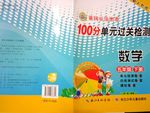题目内容
8.A visit to the village of Kitaisa,UgandaThere are not many visitors to Kitaisa,and not much that would bring them there unless they know someone living there.Most of the villagers live a distance from the main road and where they live are paths that are difficult to travel,especially during the rainy seasons.
There are a few shops selling oil,sugar,tea,flour,candles.There is no petrol station,but one will find a school and a small government hospital.But there are no doctors,just a few nurses and medically trained staff.
It is still early and most people are outside cooking their meals over firewood.Children in uniform and without shoes are going to school,making their way through muddy paths from the night's rain.
You can see some adults picking beans,or cultivating the ground around corn plants.Some children are carrying water from the nearby river.People are sitting outside having breakfast.Children will have porridge,the family will eat leftover posho,or plantain bananas called matoke.Meat is not often eaten,protein comes mostly from beans.
Here life is tough,there is simply a lack of everything.Some chickens are running around and I am told that they are basically for eggs,though one was caught and given to me for later.Life here is very simple.There is no library here,no newspapers.There was a little restaurant with some outside chairs,a beauty shop,and about eight places where food and other supplies were sold.
People in villages don't live long for the most part,since there is no infrastructure here.There are no ambulances,and if you do get sick there is no money to pay for treatment.The nearest hospital is 15kilometres away in Busunju,but even that larger town lacks facilities,though a medical clinic is there with a doctor,unlike the small facility in Kitaisa which has few things.
Other obvious problems are with water and sanitation.Water taken from creeks should be boiled and treated.It is not and because it has to be carried from a distance it is used sparingly.Children become ill with diseases that could be prevented through the use of soap and water.
There are no jobs in the village,except cultivating your garden.You can try selling food along the road,but there is no way to make money.You learn to live on little and to make every shilling count.Some support comes from relatives and if you visit someone in the village,you bring those things that they do not have and when you leave you leave them some cash.
Village people in Uganda are friendly and hospitable.They are kind and show their graceful ways to outsiders.Kids hover,adults greet you like they have known you forever.
69.What is the most likely reason for people to Kitaisa?C
A.To visit some relatives or friends.
B.To enjoy the beautiful scenery.
C.To know more about Uganda.
D.To help people away from diseases.
70.Which of the following words can NOT be used to describe the life in Kitaisa?C
A.Hard.B.Peaceful.C.Boring.D.Ideal.
71.The word"infrastructure"(paragraph 6)is closest in meaning to"C".
A.enough nutrition
B.systemic transportation
C.basic services
D.high-quality education
72.The passage mainly talks about the author'sA.
A.expectation of the under-developing village
B.experience and feelings of the visit to the village
C.suggestions on the development of the village
D.description of the beautiful scenery of the village.
分析 本文叙述非洲的乌干达的村民的起居情况,他们住在比车库不大的茅草屋里,人住在最里面的部分,牲口住在挨着主房的小房间里,屋里没有电没有水,打水的活都是孩子们在放学后或上学前去做的,因此,练就了一个好身体
解答 69.C 细节理解题.根据The walls of the huts are made of mud,which is held together by reeds and sticks,and the roofs of the older ones are thatched(覆盖)with grass,他们住在村里的小茅屋里有泥草和木头做的,故选C.
70.C 细节理解题.根据Food is usually prepared on open fires.故选C.
71.C 细节理解题.根据Nor is there any running water in the houses.old or new,the houses are not powered by electricity,and all homes are lit by paraffin(石蜡)candles called"tadobba".老房和新房都没有电,没有水,故选C.
72.A细节理解题.根据Children are the ones who have to fetch water,and they have to do this early in the morning before they go to school,or in the evening when they come home.这些孩子负责打水,故选A.
点评 本题为人文地理类阅读理解.其中题目设计细节理解题居多,细节题为阅读考题的重头戏,所占比例高达80%,相对而言较简单,因为这类题虽然要求理解准确,但基本上限于字面意义的理解,范围也限于局部,在文中比较容易找到答案.

 智慧课堂密卷100分单元过关检测系列答案
智慧课堂密卷100分单元过关检测系列答案 单元期中期末卷系列答案
单元期中期末卷系列答案| A. | are rebuilding | B. | is being rebuilt | ||
| C. | have rebuilt | D. | has been rebuilt |
| A. | have accepted | B. | am accepted | ||
| C. | have been accepted | D. | was accepted |
-You can take_____of them; I will use none.( )
| A. | both | B. | any | C. | either | D. | each |
| A. | when | B. | after | C. | before | D. | until |
| A. | After | B. | Once | C. | When | D. | As soon as |
| A. | studying | B. | to have studied | C. | having studied | D. | to study |